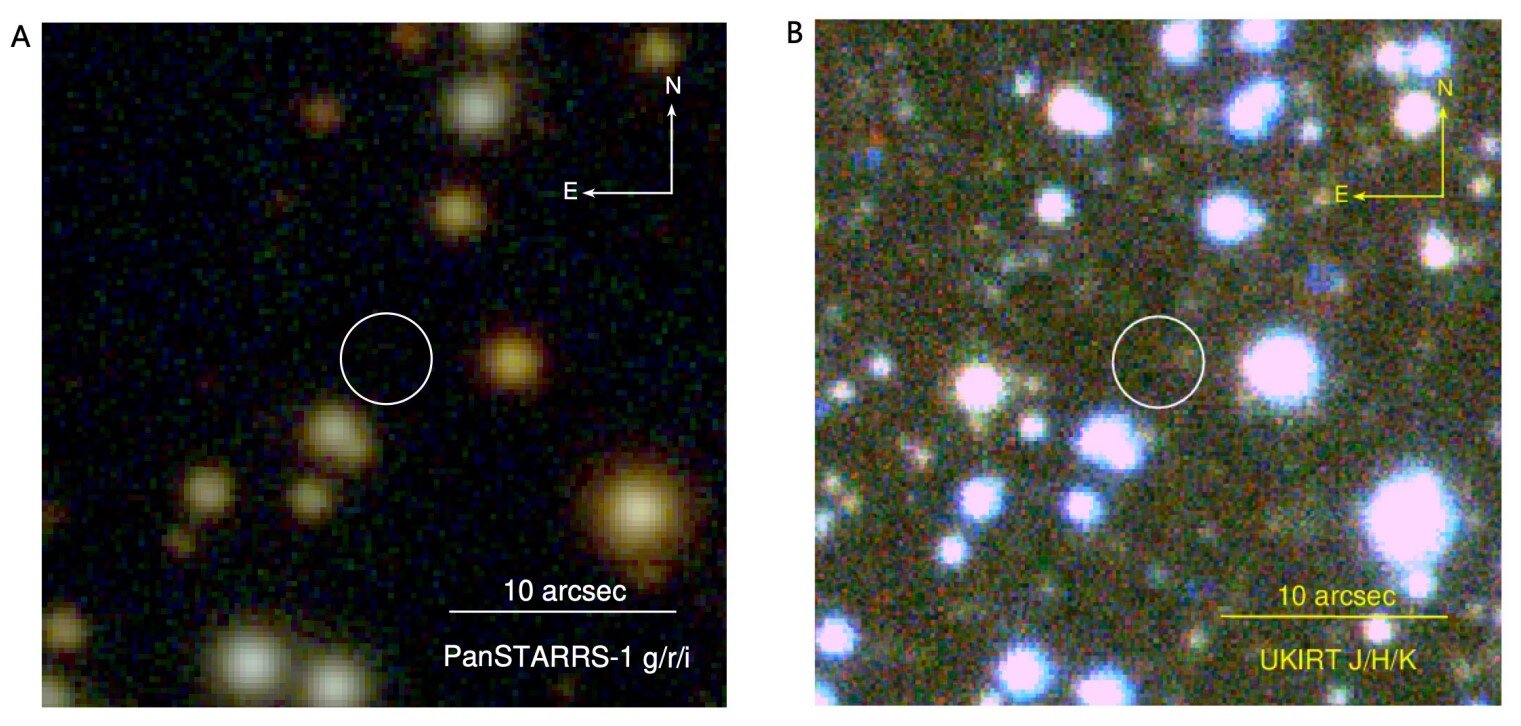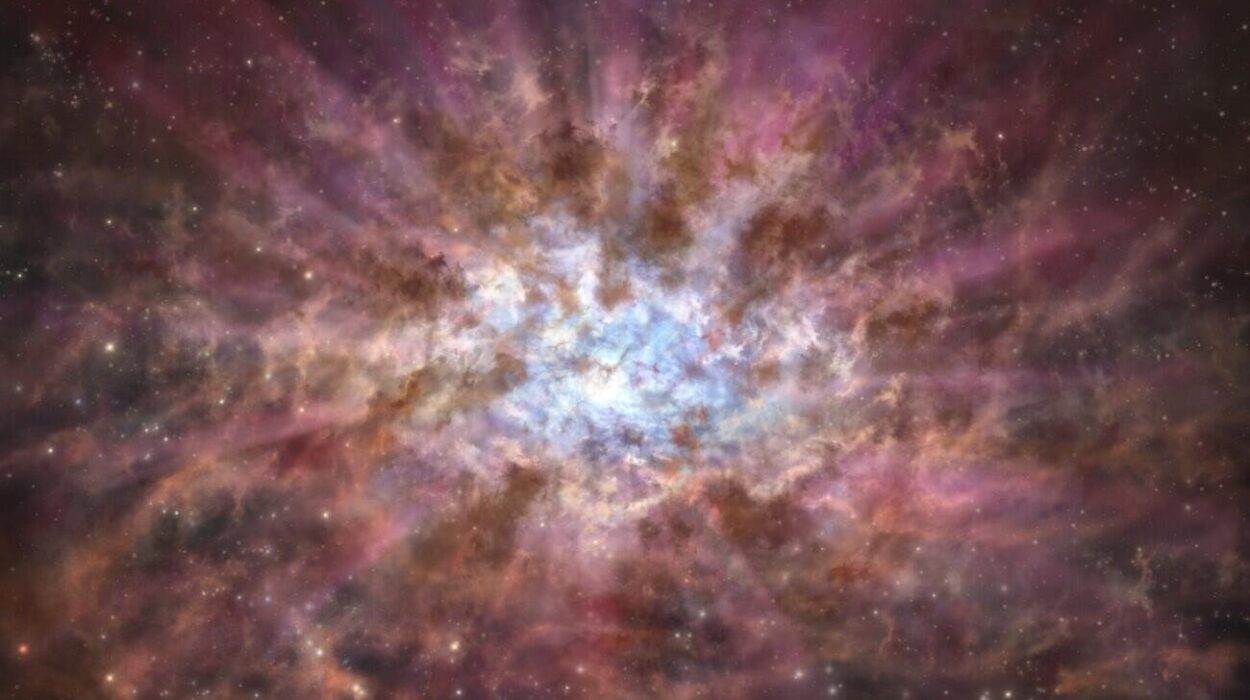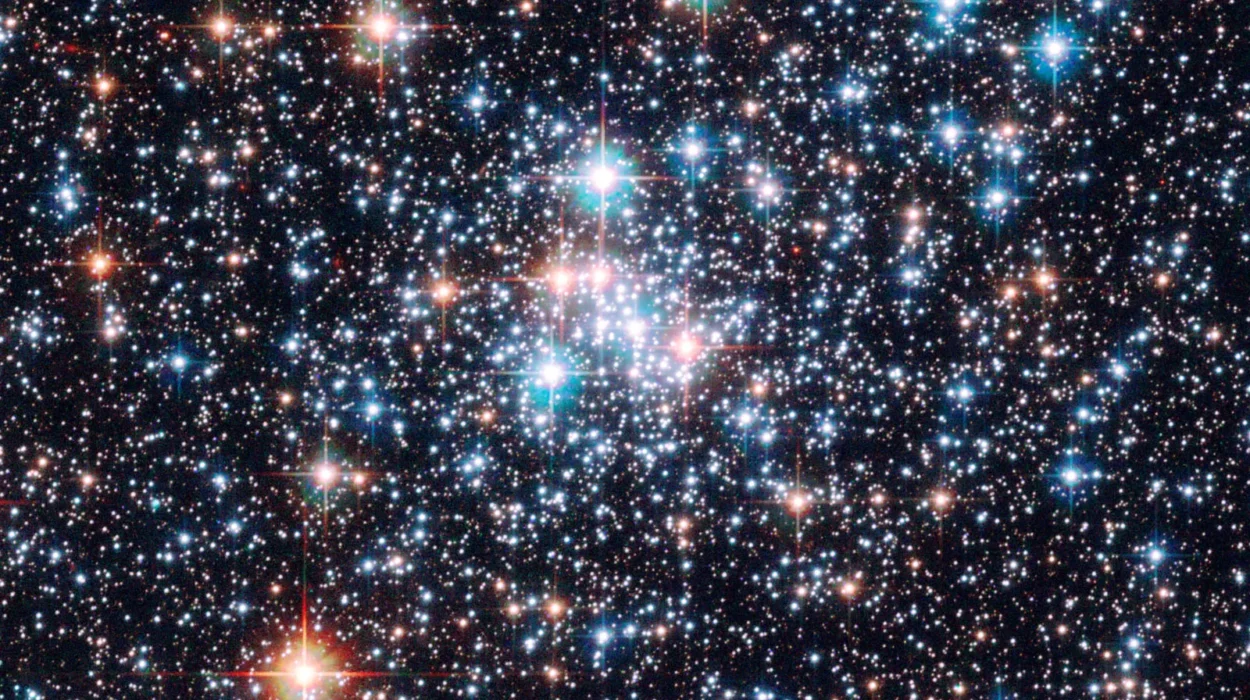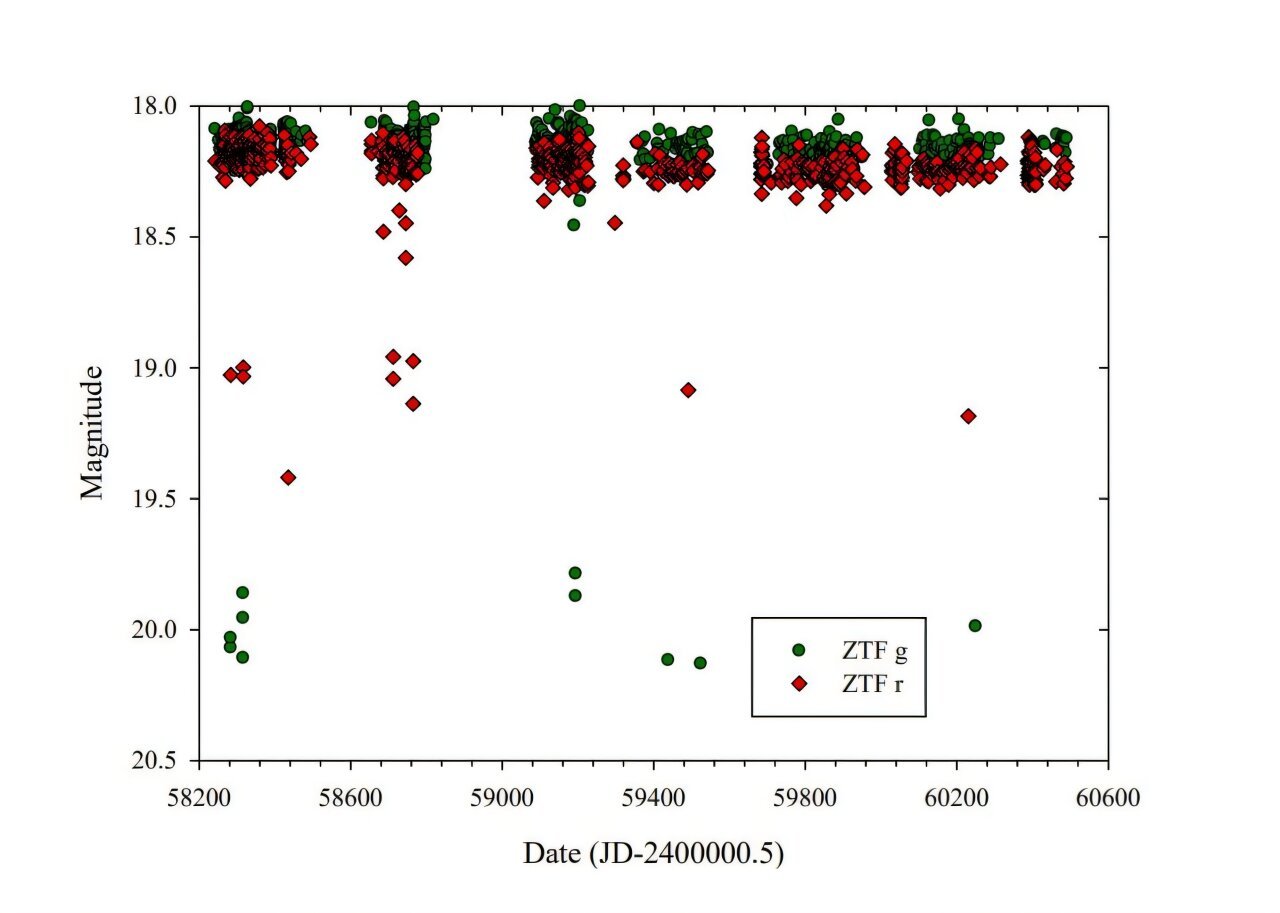In the boundless canvas of the cosmos, some of the universe’s most spectacular stories unfold in silence—hidden in pulses of radiation, in the quiet shudders of gravity, in faint eclipses lasting mere seconds. One such tale began in May 2020, when a flickering signal arrived on Earth, subtle yet unmistakable. It was a fast-spinning beacon from a neutron star, the dense, ghostly remnant of a long-dead sun.
But this wasn’t just any neutron star—it was a millisecond pulsar, spinning hundreds of times per second, emitting beams of radio waves from its magnetic poles like a cosmic lighthouse. And more intriguingly, something was briefly dimming its signal in a repeating cycle. Something massive. Something close. Something bound to it in an eternal gravitational waltz.
Now, after four years of meticulous observation and analysis, a team of astronomers and astrophysicists from multiple Chinese institutions has unraveled the mystery. They’ve confirmed that the pulsar is part of a binary star system, and its partner is a rare, helium-rich stellar companion—possibly the first of its kind ever confirmed.
What Are Pulsars, and Why Are Millisecond Pulsars So Fascinating?
To understand the significance of this discovery, it helps to appreciate what a pulsar really is. Born in the aftermath of a supernova, a pulsar is a neutron star—a stellar core so compact that a single teaspoon of its material would weigh around a billion tons. These remnants are only about 20 kilometers wide, but they carry the mass of 1.4 times that of our sun. Their density is staggering; their magnetic fields among the strongest in the universe.
Pulsars rotate rapidly and emit jets of electromagnetic radiation from their magnetic poles. If one of these jets sweeps past Earth as the star spins, we observe it as a periodic pulse—hence the name “pulsar.”
Millisecond pulsars are the elite athletes among pulsars. While typical pulsars might spin once every second, millisecond pulsars complete hundreds of rotations per second. The one identified in this study spins so quickly that it completes over 100 revolutions each second, an astounding pace for an object that’s essentially the collapsed corpse of a massive star.
These ultra-fast pulsars are thought to have been “spun up” through a process called accretion, in which material from a nearby star is pulled onto the pulsar’s surface, transferring angular momentum and accelerating its rotation. And that’s exactly where the story of this system begins.
A Gap in the Pulse: The First Clue to an Invisible Companion
The pulsar was first detected by the Five-hundred-meter Aperture Spherical radio Telescope (FAST)—the largest and most sensitive single-dish radio telescope in the world, nestled in the karst mountains of Guizhou, China. Its discovery was unremarkable at first, just another fast pulsar among thousands cataloged since Jocelyn Bell Burnell first spotted one in 1967.
But soon, researchers noticed something unusual: regular interruptions in the pulsar’s signals. For a fraction of each orbit—approximately one-sixth—the radiation beam was blocked. This wasn’t a technical glitch or a momentary lapse in observation. It was a celestial eclipse, repeated like clockwork.
That suggested the presence of a second object, something orbiting the pulsar and passing between it and Earth with perfect regularity. The periodic dimming hinted at a compact orbit and a tightly bound relationship. What kind of companion could shadow a neutron star without being destroyed by its gravity and intense radiation?
Over the next four years, scientists combed through waveforms, analyzed frequency modulations, and modeled orbital mechanics. What they uncovered was astonishing.
The Helium Star That Shouldn’t Exist
The object causing the eclipse wasn’t a gas giant or a small white dwarf. It was a star—a helium-rich star, roughly 1 to 1.6 times the mass of the sun. That immediately raised questions. Most stars of that size are hydrogen-burning main-sequence stars like our sun. Helium stars are typically massive, evolved stars, or remnants stripped of their outer layers.
So how did a helium star end up so close to a millisecond pulsar? The researchers proposed a compelling scenario: once upon a time, this helium star may have been a hydrogen-rich star, possibly even larger than the pulsar. But over time, it was stripped of its hydrogen envelope—not by stellar winds or internal fusion, but by the greedy pull of its pulsar partner. This process is known as mass transfer, and in this case, it likely involved the two stars entering a common envelope phase.
In such a phase, both stars share a single, expanded envelope of gas. The friction from this envelope causes the stars to spiral closer together, shrinking their orbit drastically. Eventually, the envelope is ejected, leaving behind a tight binary system. This explains how the stars now lie 50 times closer than Mercury is to the Sun—an almost inconceivably intimate dance.
At such a proximity, their orbital period is just 3.6 hours, meaning the two stars complete a full circuit around one another in less time than a typical work shift on Earth. The gravitational binding is extreme, yet stable, making the system a rare and precious laboratory for studying stellar evolution, extreme physics, and relativistic dynamics.
A New Kind of Binary: A Cosmic First
While astronomers have cataloged thousands of binary systems, including ones containing white dwarfs, black holes, and neutron stars, this may be the first confirmed case of a millisecond pulsar tightly bound to a helium star of solar-like mass. The uniqueness of the pairing opens new avenues for understanding not only how millisecond pulsars form, but also how stars interact, evolve, and sometimes cannibalize one another.
This binary system might represent a missing link between X-ray binaries—where a neutron star feeds off a companion—and the solitary millisecond pulsars often observed after the donor star is gone or transformed into a faint white dwarf. In this system, astronomers have caught the interaction in the act, mid-transformation.
More tantalizingly, systems like this could be progenitors of gravitational wave sources. As the stars spiral even closer due to gravitational radiation, they may eventually merge or form even stranger stellar remnants. Such a merger might lead to an ultra-massive neutron star or even a low-mass black hole, with emissions detectable by instruments like LIGO and Virgo.
FAST and the New Age of Pulsar Astronomy
The success of this discovery is a shining testament to the capabilities of the FAST telescope, a jewel in the crown of modern radio astronomy. With its vast, sensitive dish and remote location, FAST is uniquely suited to detecting faint, fast, and complex signals like those of millisecond pulsars.
By monitoring radio frequencies with exquisite precision, FAST enables researchers to map out timing residuals—tiny deviations in the arrival time of pulsar pulses that hint at external influences, like orbital motion or gravitational waves.
The fact that this system was identified through such residuals, and that the presence of the companion was confirmed through changes in pulse brightness and arrival time, underscores the growing sophistication of time-domain astronomy—the science of studying how celestial objects change with time.
Unraveling the Lives of Stars
More than just an exotic pairing, the pulsar and its helium companion offer a rare glimpse into the life cycles of stars. From the violent death of a massive star to the delicate stripping of hydrogen from its companion, the story encoded in this binary system is one of destruction, transformation, and mutual dependence.
It speaks to a deeper truth about the universe: even the most extreme, dead, or collapsed stars do not exist in isolation. They are part of complex systems, linked by gravity and history, forever pulling and shaping one another. This system, tiny and faint by cosmic standards, is a profound illustration of cosmic interdependence.
As our observational tools grow sharper and more sensitive, more such systems may come to light. But for now, this one—spinning every few milliseconds, cloaked in helium and shadows—stands alone as a cosmic oddity, a scientific treasure, and a promise of the deeper secrets still waiting to be discovered in the silent sky.
The Future of the Pulsar-Helium Binary
What happens next for this stellar duo? According to models of binary evolution, the system could evolve in several ways. The helium star may eventually shed more of its mass, becoming a low-mass white dwarf. If accretion resumes, the pulsar might be “recycled” again, spinning even faster. Alternatively, as the binary continues to lose angular momentum through gravitational radiation, the stars might spiral inward and merge.
If such a merger occurs, it could be a detectable source of gravitational waves. Though not as cataclysmic as the collision of black holes or large neutron stars, it would still offer valuable data about stellar interactions at the edge of known physics.
Moreover, this system offers fertile ground for testing Einstein’s theory of General Relativity, especially in strong gravitational fields. Pulsars are already used as natural cosmic clocks, and timing them in binary systems provides exquisite tests of spacetime curvature, orbital decay, and frame-dragging.
A Story Still Unfolding
The discovery of a millisecond pulsar bound to a helium star isn’t just another entry in the annals of astrophysical findings. It’s a window into stellar violence, intimacy, and evolution—a story written not in ink, but in radiation, gravity, and light-years.
As telescopes like FAST continue scanning the sky and as instruments like the Square Kilometre Array (SKA) come online in the coming decades, more such systems may emerge. Each one will add a verse to the epic poem of the universe, where stars live, die, and sometimes find themselves locked in breathtaking orbits—forever dancing on the edge of time.
Reference: Z. L. Yang et al, A pulsar-helium star compact binary system formed by common envelope evolution, Science (2025). DOI: 10.1126/science.ado0769. www.science.org/doi/10.1126/science.ado0769






